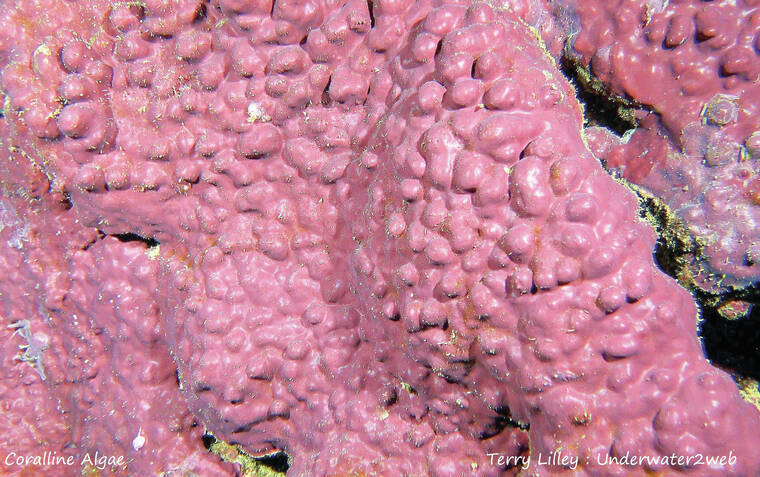If you go to Hawai‘i Island you may find a black sandy beach to walk on that was formed from ground up volcanic rock. Volcanic rock is quite brittle and the surf grinds it up quickly when it reaches the sea.
All of the Hawaiian islands are made from volcanic activity, but on the older islands like Kaua‘i and O‘ahu our beaches are white not black because our sand is made from ground up coral and shells. There is a reason why the surf in Kaua‘i does not grind up our volcanic rock out on the reef.
Kaua‘i is millions of years old, and rain and wind have eroded the ancient volcanoes and carved deep canyons. In the northwest Hawaiian Islands, erosion has eroded away entire volcanoes and only a coral atoll is left behind.
You would think that the giant surf in Kaua‘i would break down the lava reef over time, but that does not happen because the reef is alive and growing all the time. When the lava rocks start to break up in the surf a species of red algae grows in the cracks in the lava reef holding the reef together. Much like us using superglue to hold together an old vase that was dropped on the floor and broken into pieces.
Crustose coralline algae hold together the lava reef like glue. This red algae is very unusual because it is rock hard where most algae (limu) is soft. Coralline algae has calcium deposits in the cell walls of the plant, which make it as hard as coral.
Often divers will mistake the purple colored crustose coralline algae as coral because it often grows on top of the reef and can have small branches. If you look close when you go snorkeling, you will see this purple colored algae growing all over the reef. Sometimes it grows in small plate-like shapes and other times it grows in small golf ball-size shapes with a warty surface. This algae grows everywhere and even on top of seashells and dead coral.
What makes crustose coralline algae so important is it grows between the decomposing volcanic rock gluing it together, which holds the reef in place even when it gets pounded by huge surf.
It takes many years for the crustose algae to grow on the reef. So when there is a new volcanic flow on Hawai‘i Island into the sea, the surf will break down the lava quickly making the black sandy beaches. But after many years have gone by the crustose algae grows on the lava holding it together so coral can grow on the reef and make future white sandy beaches.
Crustose coralline algae is quite beautiful when it grows in caves, as it can cover a cave wall in what looks like purple grapes. You can see this stunning scene in my movie about the caves at Sharks Cove up on my webpage at www.underwater2web.com. When you go snorkeling next, just look close at the reef and you will see the purple or pink crustose algae growing everywhere.
•••
Terry Lilley is a marine biologist living in Hanalei Kaua‘i and co-founder of Reef Guardians Hawai‘i, a nonprofit on a mission to provide education and resources to protect the coral reef. To donate to Reef Guardians Hawaii go to www.reefguardianshawaii.org.


